Actor Profile: Natalie Wood
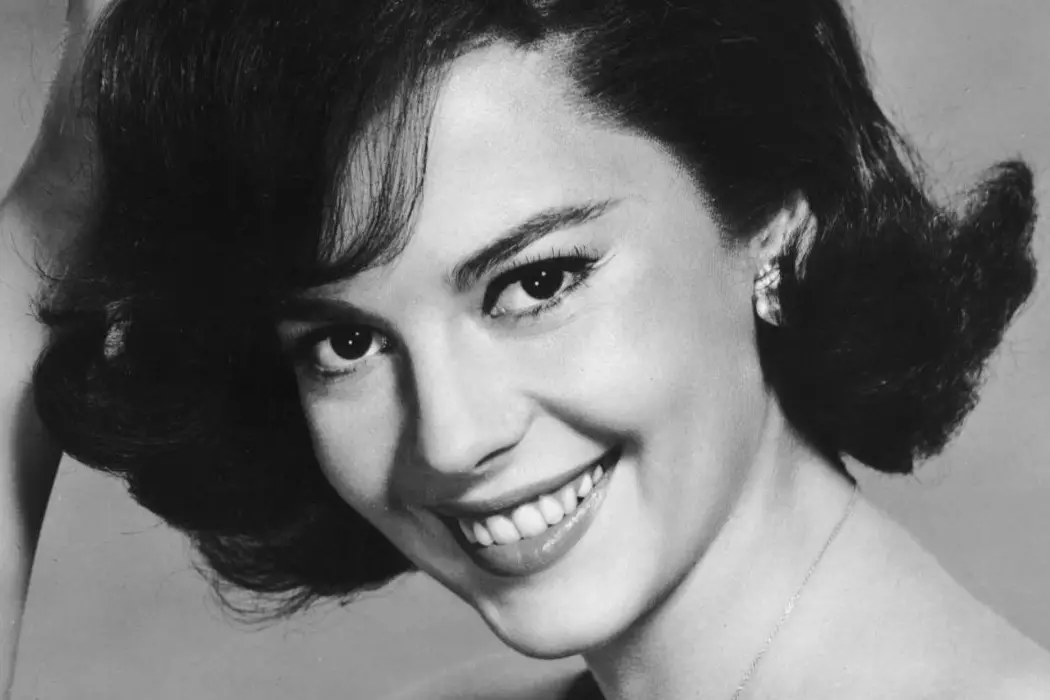
Tynan loves nagging all his friends to watch classic movies…
Fairly recently, Natalie Wood’s name has found its way back into the headlines but the circumstances couldn’t be more unfortunate. It pains me to see her brought back into the public consciousness all these years later not to acknowledge the person she was or the body of work that she left behind, but for the needlessly tragic way in which she died back in 1981.
Yes, the shrouds of mystery still swirl around the sequence of events that night off the coast of Catalina. But sad though those outcomes were, they are, alas irrevocably in the past. However, instead of trying to develop more clarity from a dead end, I would rather focus on beginnings, her beginnings.
The Early Years
Natalia Nikolaevna Zacharenko was born in San Francisco in 1938 to Russian immigrants but from a very early age, she found herself immersed in the arts. Ballet was first and by the mid-1940s she was already acting in movies. And it’s true that in those early years she was already at home embodying precocious little girls in the likes of Tomorrow is Forever (1946), The Bride Wore Boots (1946), and The Ghost in Mrs. Muir (1947) to name several pictures.
So by the age of 8, she had already worked with the likes of Orson Welles, Claudette Colbert, Barbara Stanwyck, and Gene Tierney – a staggering array of talent. In her first film, directed by Irving Pinchel, she gained the name that would stick with her for a lifetime, Pinchel using the surname of his friend film veteran Sam Wood for inspiration. Though Orson Welles was commonly prone to hyperbolic statements, he nevertheless lauded Natalie in Tomorrow is Forever for being so good, “she was terrifying.” Effusive praise to be sure.
But in 1947, she really hit the big time signed by 20th Century Fox to appear in the picture that became emblematic of her early career and a perennial favorite right around Christmastime.
Miracle on 34th Street (1947)
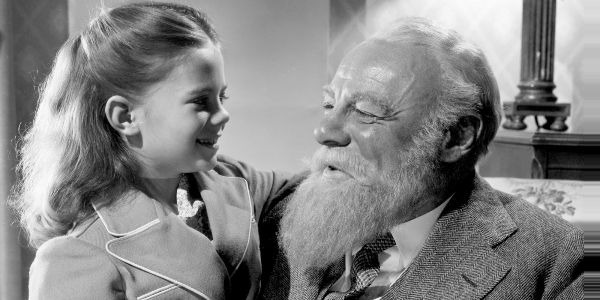
Obviously, Miracle on 34th Street has many devoted fans. George Seaton’s picture simultaneously bolstered Macy’s image and the visibility of their parade while boasting a nearly inexhaustible cast of talent including Edmund Gwenn, Maureen O’Hara, and John Payne among a host of others.
But Natalie Wood’s performance is of note too because she is very much an extension of Doris Walker’s outlook on life. She’s pragmatic. To put it bluntly, she doesn’t believe in Santa Claus. Little Susan has been provided the very same framework to see the world. Rationality is preached in the place of childhood imagination. The two of them are the film’s central case study as Kris (Gwenn) fights to maintain some amount of good cheer and wide-eyed wonderment in New York City while his faithful friend and lawyer Fred (Payne) looks to prove he’s really Santa.
Upon further consideration, what makes Wood’s performance so impactful is the fact that even at such a very young age, it doesn’t necessarily feel like the part is being carried by a little girl simple being cute. Yes, she’s darling to be sure, but there also manages to be some amount of change that comes over her character. Susan Walker starts out a very grown-up child but by the film’s conclusion, her heart has been changed enough to feel comfortable being a little girl, dreaming of a big house in the country with her mother. I’m not saying that at 8-years-old Wood purposely imbued the part with all these things but it does suggest that she was more than capable of being a full-fledged actress. And of course, she was.
In the still relatively nascent stages of her fledgling career, young Natalie was still working in Hollywood quite regularly. If you do a quick appraisal of her credits you’ll see spots on any number of titles both film and television during the early 50s. Included among them where The Star (1952) starring Bette Davis and the generally forgotten sitcom The Pride of the Family (1953-54).
Rebel Without a Cause (1955)
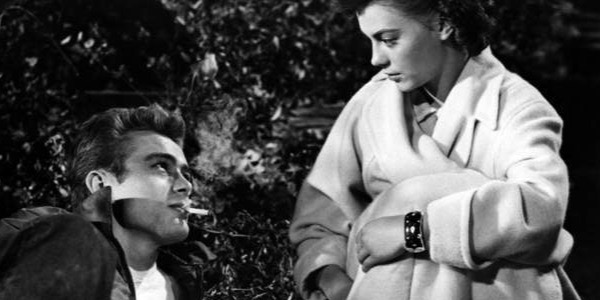
But the crucial film that really gave Natalie Wood a significant chance to prove herself and push her career forward, was without a doubt Nicholas Ray’s seminal teen drama Rebel Without a Cause (1955). Of course, James Dean has remained the film’s iconic poster boy ever since it’s release. But one could argue that the picture belonged just as much to Wood and co-star Sal Mineo. Together, the three of them exemplify what struggles inundate the teenager as they struggle with peer pressure and parents who don’t seem to understand them.
What becomes evident from our first glimpses of Judy (Wood’s character) is a complete shedding of a typical ingenue stereotype. At the very least she’s the quintessential teenage girl with an edge that allows her to initially belittle Dean’s Jim Stark, the alienated new kid on the block. But when things turn bleak she also reveals her own string of insecurities. Ultimately, clinging to the oasis that she finds with Jim and Plato. They are a trifecta who find an adequate amount of solace from the big bad world in the shadow of The Griffith Observatory.
While Dean’s own restlessness and the remembered histrionics he unleashes on a staircase caught between two parents is emblazoned in most people’s minds, without Judy and Plato there’s no outlet. Even as the film’s hope of a happy ending is snuffed out, that only highlights the rapport born among these friends. Natalie Wood’s performance would net her a first Oscar Nomination for Best Supporting Actress and it remains a true hallmark of her career.
The following year she would have a crucial role in John Ford’s The Searchers (1956) and graduate from Van Nuys High School which was, coincidentally, also attended by her future romantic co-star Robert Redford. She was 18 years old and the world was seemingly her oyster.
Splendor in The Grass (1961)
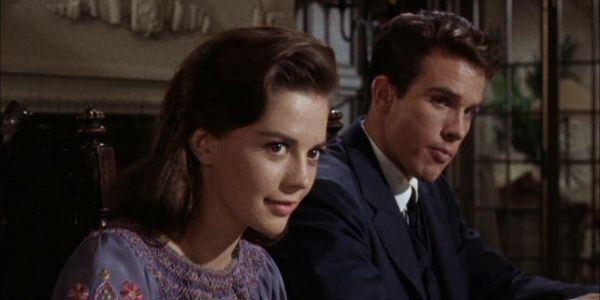
Of course, Wood’s next hurdle was breaking out of the next image the studios tried to saddle her with. She became the pretty young girlfriend of some other heartthrob or leading man. Yes, in Splendor in The Grass she’s starring opposite a dashingly handsome Warren Beatty but with renowned director Elia Kazan, she gave arguably the most lauded performance of her entire career for the depths it managed to cull. Indubitably Kazan can be given some credit but most of it falls on Wood who seems positively uninhibited.
In fact, it’s possible that up until this point in her career, no one had seen Natalie Wood like this. At times Wilma Dean is sympathetic and captured in the throes of love but then in other moments — darker ones — she’s unhinged to such extremes it’s frightening. She’s teetering on the edge of insanity before plunging in forthright. Still, William Inge’s Depression-era tale of sexual repression becomes the perfect boat for her. Pressing Wood’s acting talents further than before as Deanie struggles with being a “good girl” and doing what her parents told her.
But far from just being another story of teenage love, Splendor in The Grass reveals itself to be interested in the long road to healing that comes in the wake of adolescence. Natalie Wood and Beatty (in his film debut) do a fine job guided by Kazan even if the hothouse aesthetic carried over the 1950s still feels slightly over the top at times.
West Side Story (1961)
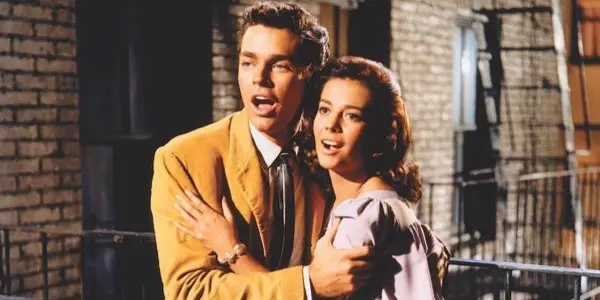
West Side Story is unquestionably one of the most iconic American musicals of the 20th century. Directed and choreographed by Robert Wise and Jerome Robbins respectively with a score by Leonard Bernstein, it’s hard to understate the phenomenon on stage and screen with its forbidden love story set against the racial tensions of New York City.
Sure, Natalie Wood isn’t quite fit to play the Puerto Rican named Maria and her vocals were dubbed by the admittedly sublime Marni Nixon but no matter, Wood does bring her usual sprightly winsomeness to the role. Full of naive shimmering joy while still striking the notes of sadness. Because her Romeo and Juliet star-crossed romance with Tony (Richard Beymer) follows that very same trajectory of euphoria disrupted by the heartbreak of harsh reality.
The perfect scenes to juxtapose begin with her sashaying and strutting through the dress shop to the tune “I Feel Pretty” and while it’s easy to deride the number (maybe that’s just me) there’s no denying her charming charisma all throughout. And yet, when her heart is ripped out in the final moments, the deadly gun pointed menacingly in all directions, the bitter gall of what’s before her is completely present in every fiber of her being. I’m not always an impeccable judge of what is authentic acting but there’s little doubt that Natalie Wood elicits an emotional response. Her strikingly scarlet dress personifying the burning outrage that comes out of her.
Love With The Proper Stranger (1963)
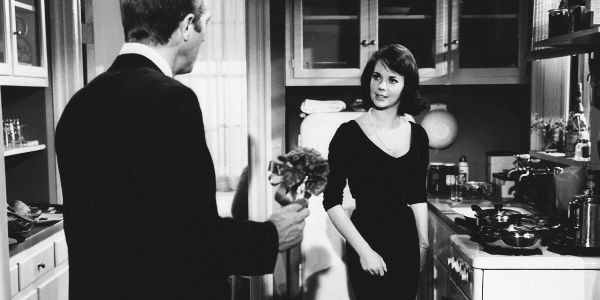
Love With The Proper Stranger is an endlessly surprising picture because it’s not what you expect on multiple fronts. Steve McQueen stars alongside Natalie Wood in a film that is about as subtle as they come. It’s unsentimental and deals in fairly stark themes – the film’s poetic title providing an eloquent euphemism for a one night stand and the outcomes – namely an unwanted pregnancy.
Robert Mulligan was a director most remembered for To Kill a Mockingbird but in the package of this unassuming picture he guides his stars through a slice-of life-story with a certain jaded authenticity in the streets of Little Italy. It’s part drama but hardly prone to theatricality. It’s tinged with comedy but never makes light of its characters or their circumstances.
McQueen who was known mostly for action fare and Wood despite being Oscar-nominated were not necessarily considered serious actors and yet their candor might surprise some people. The volatility of a picture like Splendor in The Grass is gone and what’s left is arguably a more vulnerable shell of nuanced disillusionment in romance. Wood immaculately navigates through the film’s most earnest scenes while playing the lighter moments with her usual vivacity.
Though she would try to attain similar traction and new roles to diversify her portfolio, she didn’t have as much success as she probably aspired for. Two films that partnered her with newcomer Robert Redford where Inside Daisy Clover (1965), also directed by Robert Mulligan, and then This Property is Condemned (1966). Neither picture gained the kind of accolades that had earnestly been hoped for and even if Natalie Wood‘s performances are intriguing, they’ve all but faded into the periphery.
The Great Race (1965)
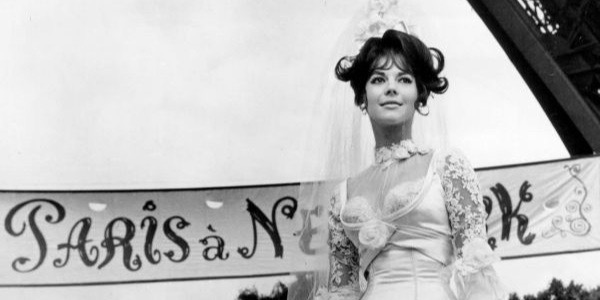
The year prior to The Great Race, Natalie Wood was partnered with Tony Curtis in the provocatively-titled Sex and the Single Girl which due to its star power, including the aforementioned duo and Henry Fonda and Lauren Bacall, was a moderate box office success but only a middling film.
The Great Race might also be mostly fluff compared to the majority of the featured titles on this compilation but it’s a wacky, rip-roaring good time with plenty of sword fights, pie fights, dastardly schemes initiated by the nefarious Professor Fate (Jack Lemmon) and his bumbling sidekick Max (Peter Falk), reinforced by numerous other shenanigans.
Curtis stars as The Great Leslie, the daredevil with the shining smile, while Wood plays a photojournalist/suffragette Maggie Dubois who also takes part in the transpacific race from New York to Paris. While not necessarily remembered for its depth, Blake Edwards does stage some diverting comic sequences in this epic genre send-up. For many viewers, the image of Wood and the others plastered with pies in their turn-of-the-century getup is forever etched on their minds.
Still, behind the veneer of rowdy antics, Wood’s personal life was slightly worse off. A few years prior she had divorced her first husband Robert Wagner (though they would later be remarried) and she was struggling to move her career forward in the direction she desired. Following Splendor in The Grass (1961), she spent extended amounts of time in psychoanalysis for the remaining decade. It should be noted that this is reflected in the life of a film actress who was only the 2nd person to garner 3 Oscar nominations under the age of 25 (The other being lovely Teresa Wright). Still, struggling personally and with a career that felt unfulfilling, Wood attempted suicide unsuccessfully in 1966. But despite the issues she may have been coping with, Natalie Wood was far from being done.
Bob & Carol & Ted & Alice (1969)
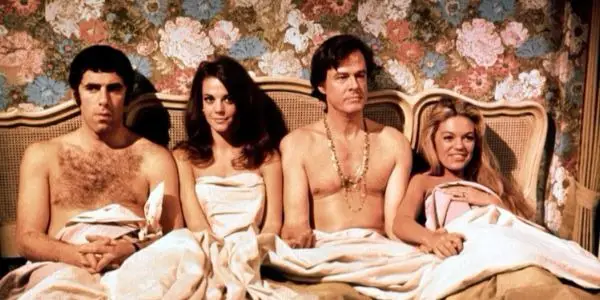
If there is one picture to signify Natalie Wood’s final progression following that from child starlet to youthful woman and finally to a mature lady residing in a different age, Bob & Carol & Ted & Alice, directed by Paul Mazursky, would be that picture. Her career had spanned two decades already and with the late 1960s came the dawning of the Sexual Revolution with new ways of perceiving romance and intimacy.
In the campy glam and Free Love era of Southern California, we find the perfect launch pad for such an experiment in relational openness – in more ways than one. The picture plays on such themes with a glibly satirical manner rounding up two couples or four individuals and marrying them together. What comes to pass amid the revelations and minor quibblings is a climactic game of spouse swapping diluted by psychobabble and experimentation.
Above all, the movie is significantly boosted by the ensemble, with Wood being paired with Robert Culp as well as Elliot Gould and Dyan Cannon. Sprawled out on the bathroom floor together or soul-searching at new age retreats, we see them at their most neurotic, nonconventional, and equally comical. Mazurksy’s picture is born of a different age and if it rests on any conclusions, the most succinct might be found in Jackie DeShannon’s anthem, “What the World Needs Now I Love” played over the film’s final entrancing moments. In these interludes, Natalie Wood especially has an almost uncanny ability to denote the inner workings of her being with a far-off listless gaze. Thus, saying nothing at all proves to be just enough.
Natalie Wood: Final Thoughts
What you have before you is really Natalie Wood’s career broken down to a few highlights. Others might do a more thorough job of tackling the complexities and the impressive depths of her career. But it was ultimately her human qualities that endeared her to many. So it’s a delight to hear even a few of Robert Redford’s recollections of his co-star from their two pictures together. In fact, Natalie Wood, though she was not acting much during the 1970s, still made a cameo in The Candidate as a favor to her friend. After listening to his words, our suspicions are confirmed that far from being a projected image up on a screen, she was a very real person full of love, compassion for her fans, and debilitating insecurities too.
Sadly, Brainstorm (1983) would prove to be her final film. She was aboard the aptly named boat Splendor with her husband Robert Wagner and her current co-star Christopher Walken the evening before she was discovered to be missing. We would never get to see her again onscreen.
However, based on rumblings about Orson Welles’ long sidelined passion project, The Other Side of the Wind, featuring a mind-boggling list of now deceased Hollywood talent, it might be possible to see Natalie Wood on the screen in the near future for however briefly. And even if it is only a small touch, it would be a fitting development given the compliments that the famed actor-director showered down on that talented little girl so many years before.
Because regardless of the many facets of her career from the filmography, to the love of life, to her untimely death, there’s no question that Natalie Wood deserves to be eulogized, most of all, as a formidable actress and a caring human being. Over the years she blossomed into a Hollywood talent blessed with sparkling candor and genuine vulnerability. Hopefully, that’s what she will be remembered for.
Do you think Natalie Wood deserves to be considered a bona fide actress or merely a Hollywood movie star? Were there any other films that you would have included? Tell us your thoughts in the comments below!
Does content like this matter to you?
Become a Member and support film journalism. Unlock access to all of Film Inquiry`s great articles. Join a community of like-minded readers who are passionate about cinema - get access to our private members Network, give back to independent filmmakers, and more.
Tynan loves nagging all his friends to watch classic movies with him. Follow his frequent musings at Film Inquiry and on his blog 4 Star Films. Soli Deo Gloria.













